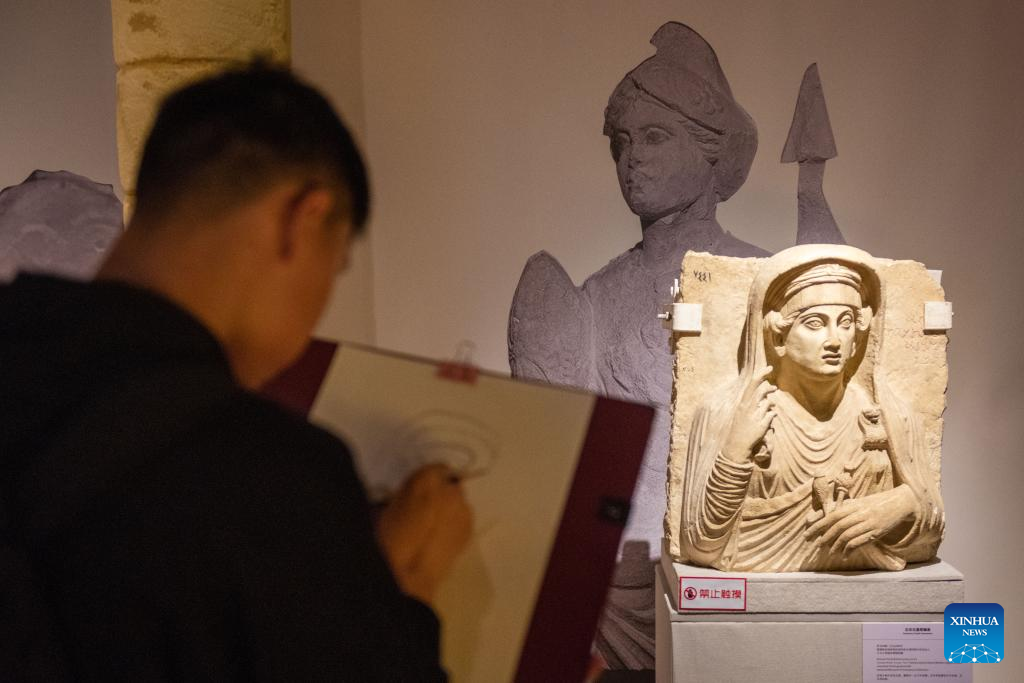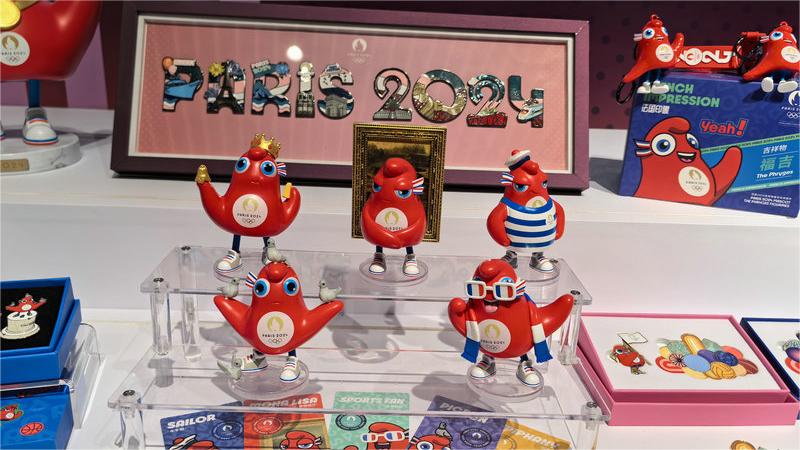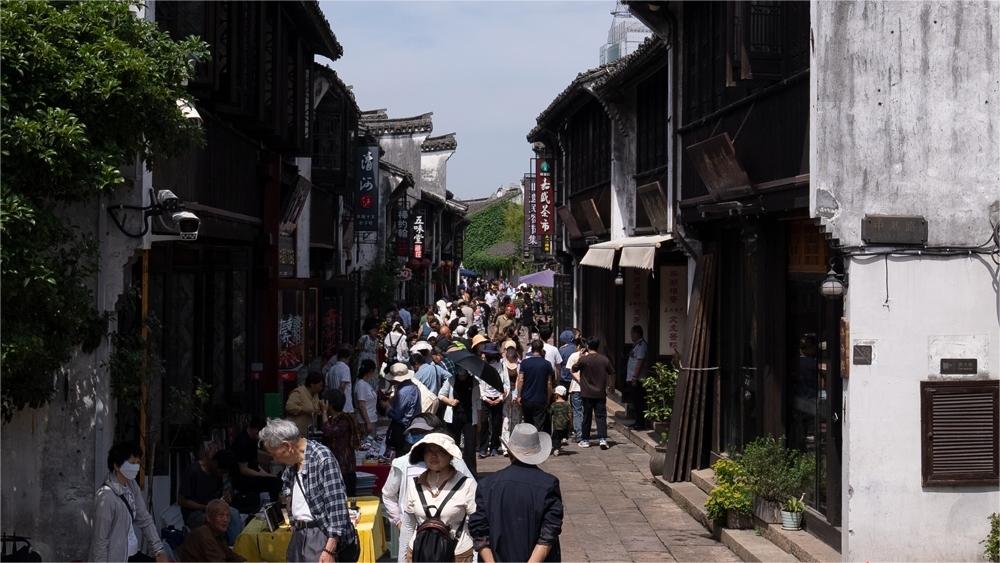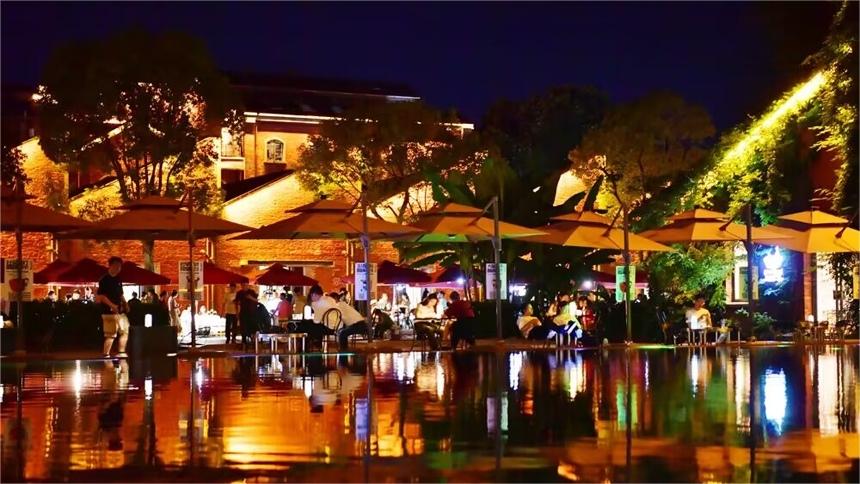Syrian heritage exhibition tour wows visitors across China

This photo taken on Dec. 17, 2023 shows exhibits during an exhibition featuring Syrian cultural relics at the Ningxia Museum in Yinchuan, northwest China's Ningxia Hui Autonomous Region. (Xinhua/Li Xulun)
BEIJING, May 31 (Xinhua) -- A collection of cultural relics from Syria is on display at the Nanjing City Wall Museum in east China's Jiangsu Province, which started on May 18 and runs until Oct. 18.
This exhibition highlights Syrian culture and civilization and is part of a touring series jointly organized by Art Exhibitions China and the Directorate General of Antiquities and Museums (DGAM) in Syria. The tour began in 2021, commemorating the 65th anniversary of diplomatic relations between the two countries.
Over the past three years, a total of 195 pieces or sets of Syrian treasures, including statues, reliefs and lapis lazuli necklaces, have been exhibited in museums across more than 10 Chinese cities like Shenzhen and Chengdu, attracting more than 1 million visitors.
Extensive preparations were made to welcome the arrival of these treasures, including planning the transportation route and arranging various display cases to provide the relics with a safe and stable environment with ideal temperature and humidity conditions, said Jin Lianyu, director of the Nanjing City Wall Museum.
"It is a big and complicated exhibition project as the relics are in large quantity and various sizes, with the largest one measuring over 1 meter in height and weighing 679 kilograms, while the smallest one measuring 1.7 centimeters in length and weighing a few grams," said Xiao Fahua, a staffer of the museum.
"People are lucky to see the precious cultural heritage," said Jin, adding that they managed to find the perfect angles to present the details of these relics by adopting various display methods such as moving display cases and placing mirrors.

This photo taken on Dec. 17, 2023 shows a man copying an artifact during an exhibition featuring Syrian cultural relics at the Ningxia Museum in Yinchuan, northwest China's Ningxia Hui Autonomous Region. (Xinhua/Li Xulun)
Mohammed Nazeer Awad, head of the DGAM, noted that he was impressed by the professionalism and credibility of the Chinese management team, as well as the technology used in exhibitions to protect the relics and highlight their cultural significance.
"China is a popular tourist destination, making it an ideal location to showcase the Syrian civilization to a diverse audience," said Awad, adding that they have decided to extend the exhibition period.
Earlier this year, the exhibition was held by the Guyuan Museum of Ningxia in the city of Guyuan, northwest China's Ningxia Hui Autonomous Region.
Located at the intersection of Asia, Africa and Europe, Syria was an important country on the ancient Silk Road, and Guyuan was also a vital trading location on the ancient Silk Road.
"During the heyday of trade on the ancient Silk Road, Guyuan was a link between Syria and China," said Wang Xiaojun, director of the Guyuan Museum of Ningxia, adding that visitors would find that there are many similarities among cultural relics unearthed from the two areas, representing rich cultural and trade exchanges between China and Syria in history.
"The Silk Road is what established those important cultural relationships with China more than it established important trade relationships, and the Silk Road continues now in one way or another," said Awad, noting that the exhibition is an extension of the Silk Road as well as an extension of cultural relations with China.
Chen Kuan, deputy director of Jiaxing Museum in east China's Zhejiang Province, one of the host museums of the exhibition tour, said that visitors to the exhibition can also observe similarities between the ancient Chinese and Syrian cultures, particularly in their shared pursuit of exquisite craftsmanship, reverence for ancestors, and aspiration for a better life.
"The exhibition is another proof that the two nations share flourishing cultural exchanges, which can help facilitate mutual understanding and boost the awareness for cultural relics protection," said Liu Xinlu, dean of the School of Arabic Studies at Beijing Foreign Studies University.
Photos
Related Stories
- China donates medical equipment to Syrian hospital
- China Aid, IFRC launch humanitarian project to strengthen Syrian health sector
- Chinese envoy urges collective efforts to alleviate humanitarian crisis in Syria
- Mogao Caves' preservation inspires Syrian experts
- China donates 10 mln USD worth of communications equipment to Syria
- Chinese aid helps renovate primary school in Damascus
Copyright © 2024 People's Daily Online. All Rights Reserved.









